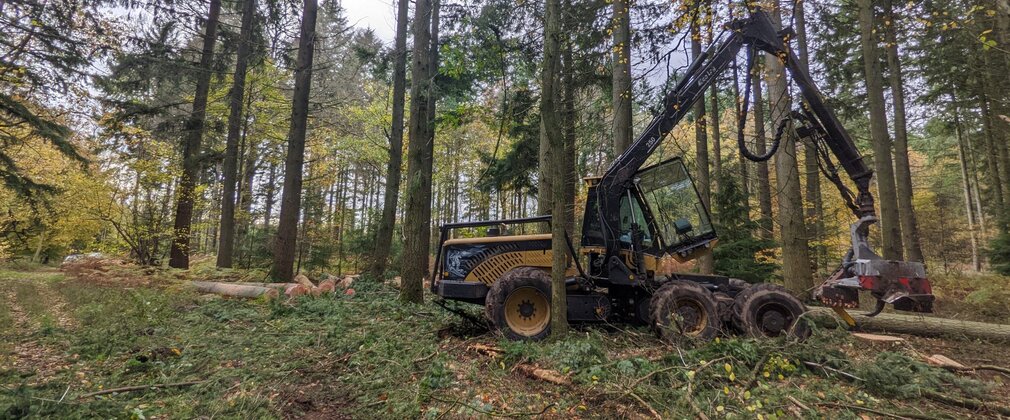Forestry operations at Croydon Hill
Croydon Hill is a working woodland producing sustainable timber. We are working in the northern area of the forest during 2025. This page provides more information about the work we're doing.
What is happening?
Croydon Hill is a working woodland, managed by Forestry England to produce sustainable timber for the UK market. We carry out regular forestry operations, which are an essential part of sustainable forest management.
The timber from Croydon Hill is certified by the Forest Stewardship Council® (FSC®) and the Programme for the Endorsement of Forest Certification (PEFC) as being sustainably produced.
We are thinning the trees across the northern part of the forest. This means removing selected trees for timber products. This gives the remaining trees more space and light to grow to their full potential. Thinning also lets more light onto the forest floor, which improves the habitat for ground flora and the wildlife it supports.
We’re also clearfelling two small areas, which means we are removing all the trees at once.
Can I still visit Croydon Hill?
The most important thing for Forestry England is to keep the public, our staff, and contractors safe.
The forest is still open for you to visit, but there will be times when we need to close some access routes to allow us to work safely. Please follow all signs and instructions at all times. These are for your safety, whether or not you can see or hear us working. This will help us to finish working as quickly as possible.
Forestry work is very hazardous. A falling tree can weigh several tonnes and hit the ground at nearly 60mph. If a harvesting machine chainsaw snaps, it can fly through the forest like a bullet.
What about the wildlife?
Harvesting trees is an important part of sustainable forest management. Before we start any forestry work, we carry out thorough ecological surveys to check for species such as birds, mammals, rodents, invertebrates, flora, and fungi. For instance, Haldon Forest is home to scarce species of raptor and butterfly. We consider these findings against complex factors including tree health, how the ground slopes, soil condition, and likely rainfall when planning work that will support our long-term management plan. There isn’t a single, perfect time of year for forestry work.
Where can I find out more?
You can read our full forest plan for Croydon Hill online. If you have any questions about our work in the forest, please email us.

